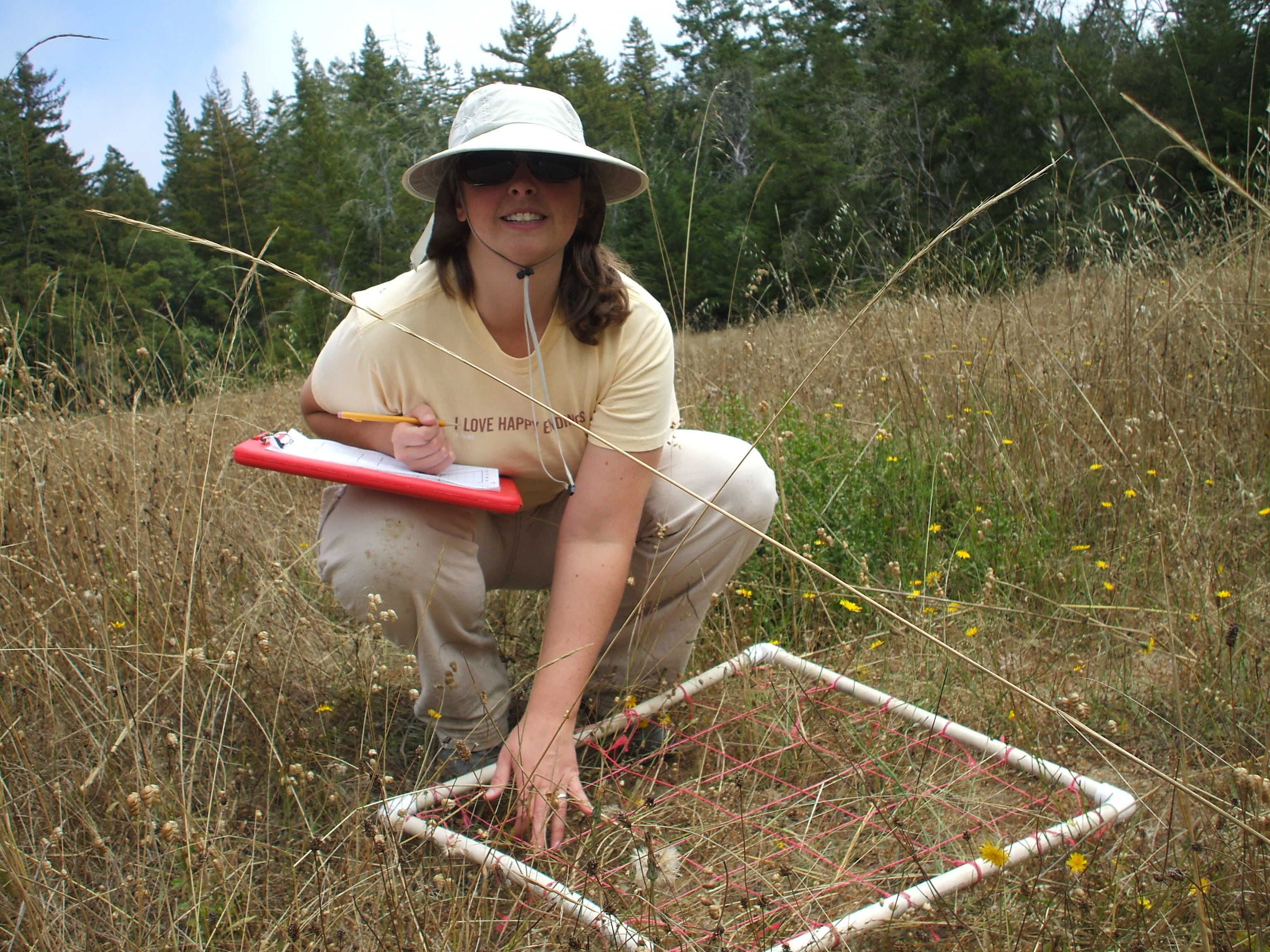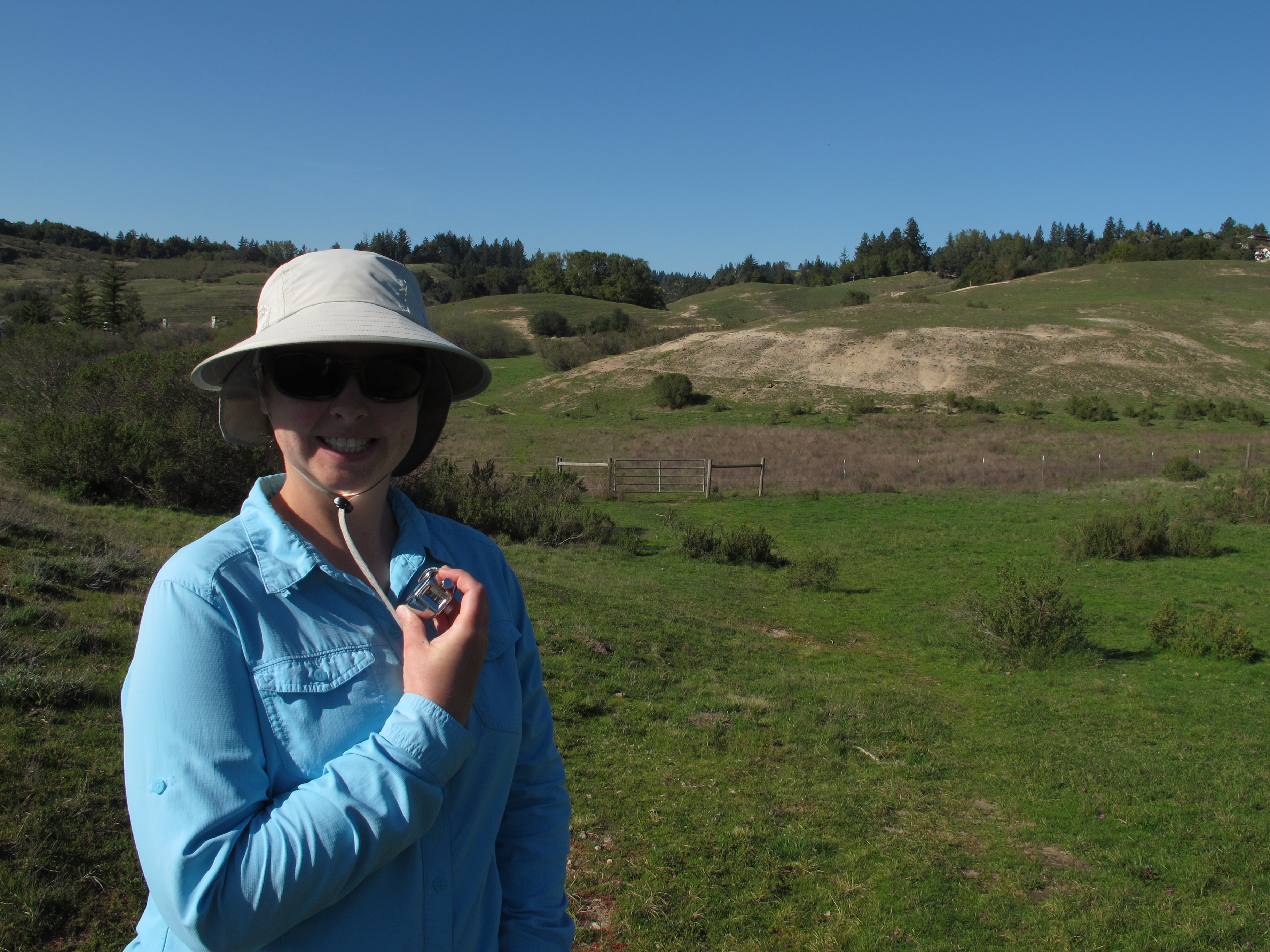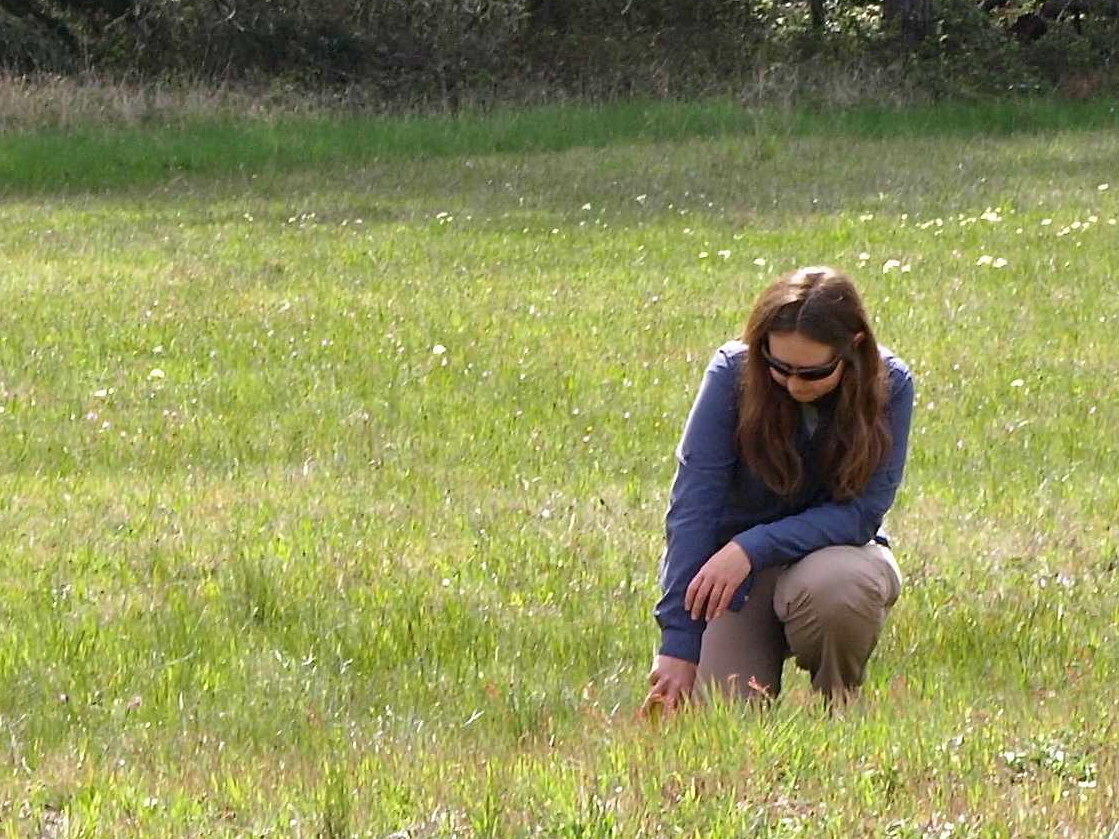Tara Cornelisse
PhD Candidate (2008-2013)
Project Description:
My dissertation incorporates both metapopulation theory and habitat quality metrics with application of social sciences for the conservation of the endangered Ohlone tiger beetle (Cicindela ohlone). Cicindela ohlone is endemic to the few remaining coastal terrace prairies in Santa Cruz County where it lays eggs in and forages on bare ground. The prairies were once dominated by bunch grasses, fire, and large grazers that maintained bare ground but now consist of non-native annual grasses with cattle grazing and recreation creating the little remaining bare ground. My dissertation work approaches species conservation from multiple scales:
- Metapopulation dynamics and habitat metrics to predict patch conservation value:
Cicindela ohlone represents a metapopulation of separate asynchronous breeding populations, connected enough to allow occasional migration between patches. Thus, it is necessary to conserve unoccupied patches, but how can we predict those patches? My questions are: What local habitat characteristics predict the incidence of C. ohlone? What is the contribution of patch isolation and area versus local habitat characteristics on the incidence of C. ohlone? Can these factors predict important, yet unoccupied patches? To test this, I measure habitat factors including vegetation and soil sampling as well as conducted GIS analysis to obtain patch areas and connectivity in three patch categories where beetles are present, extirpated, and absent.
- Population viability analyses: Many conservation studies restrict response variables to incidence and/or abundance of the study organism. While useful as a snapshot of population data, these measurements do not take into account the viability of the populations and their potential for future growth or extinction risk. To do so for C. ohlone, I am conducting a stage-class population viability analysis by tracking the population size, survival, transition, and fecundity of adults and larvae in each habitat patch for three years.
- How knowledge affects behavior of recreationists in species habitat: When trails were temporarily closed for C. ohlone management, a conflict developed between recreationists and conservation. To test the effect of recreation on C. ohlone, I observed beetle behavior during 30 trials each of bikes at slow speed, fast speed, walking, and no recreation. Slow biking had a significantly less effect on beetle behavior than fast bikes. To test how recreationists’ knowledge affected attitudes toward the beetle and willingness to comply with management strategies, I conducted 300 surveys at a trailhead in C. ohlone habitat. Prior to taking the survey, half of the participants were given ‘new’ knowledge about C. ohlone and the effect of recreation. Only recreationists with prior knowledgewere significantly more likely to rate its conservation as very important and, in turn, more likely to state compliance with slowing down.
- Habitat restoration and adaptive management: I tested habitat creation as a potential management strategy to increase the availability of oviposition sites for C. ohlone. I compared three different bare ground treatments by scraping off surface vegetation and tested whether bare ground creation expands C. ohlone range by scraping at increasing distances from the core habitat and monitoring C. ohlone colonization. Cicindela ohlone oviposited significantly more in artificial bare ground plots compared to controls both up to two years after scrapes were created.
- Effects of local habitat characteristics and metapopulation factors on the status of the Ohlone tiger beetle
- Viability of Ohlone tiger beetle populations
- How does recreation activity (hiking and biking) affect the mating and foraging behavior of the Ohlone tiger beetle?
- How does recreationist's knowledge of the Ohlone tiger beetle affect their attitude and stated behavior in regards to the beetle and its habitat?
- Will Ohlone tiger beetles use artifical habitat as egg laying sites?
For more details on my dissertation work and other interests, please visit my person website: http://people.ucsc.edu/~tcorneli
For more information on my work and conservation ideas, please visit my blog: http://conservationofbiodiversity.wordpress.com/


